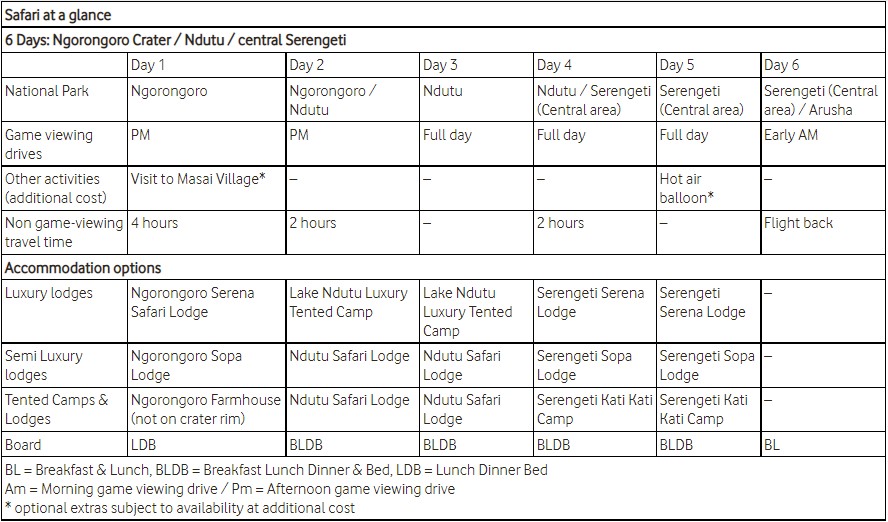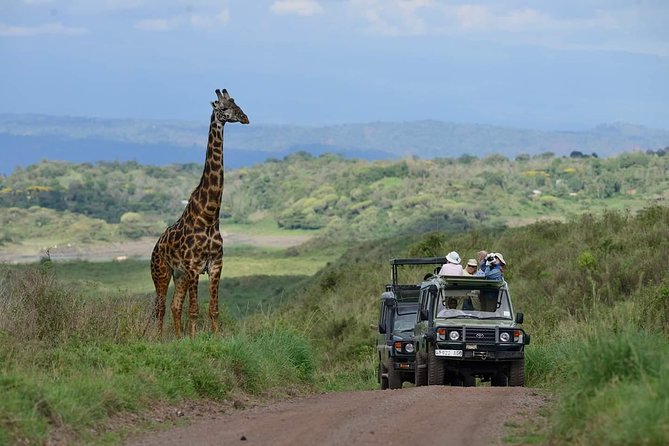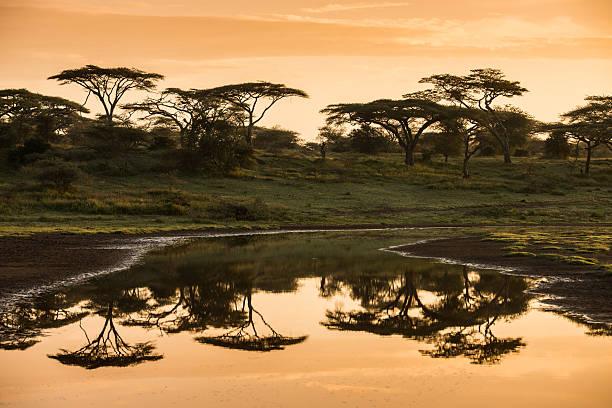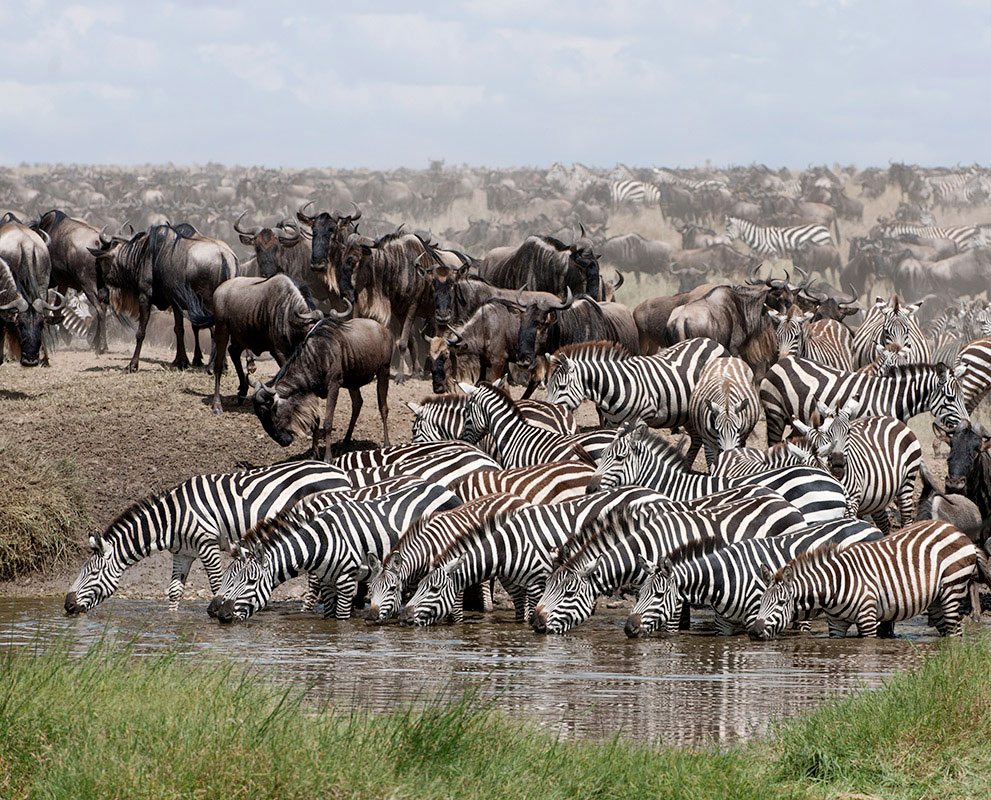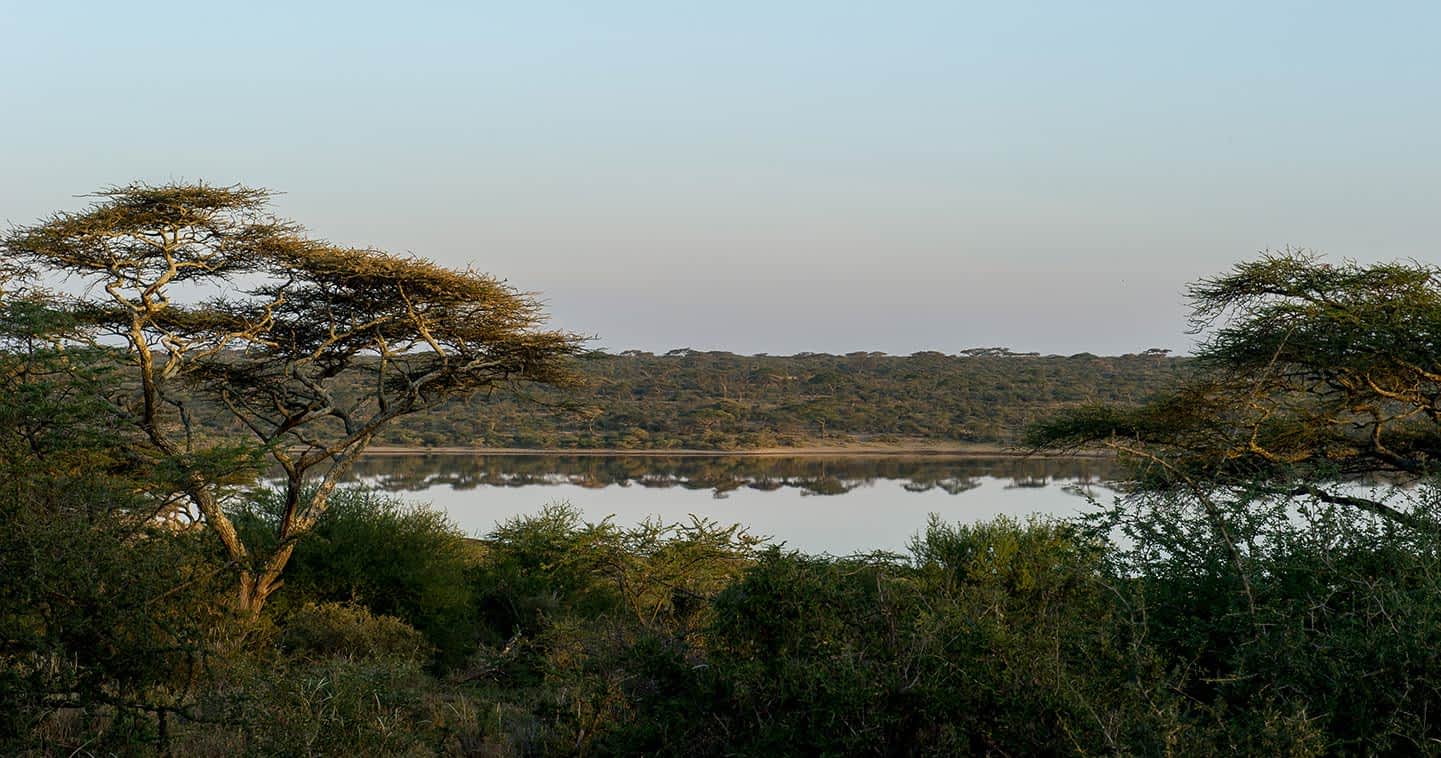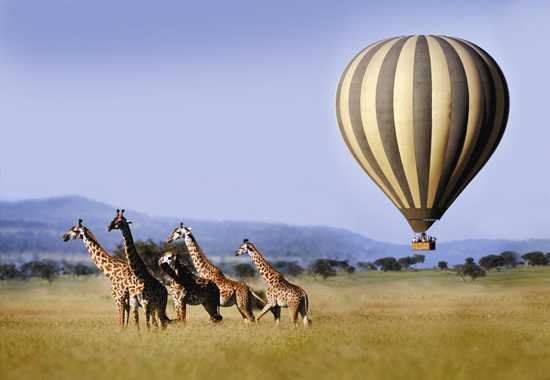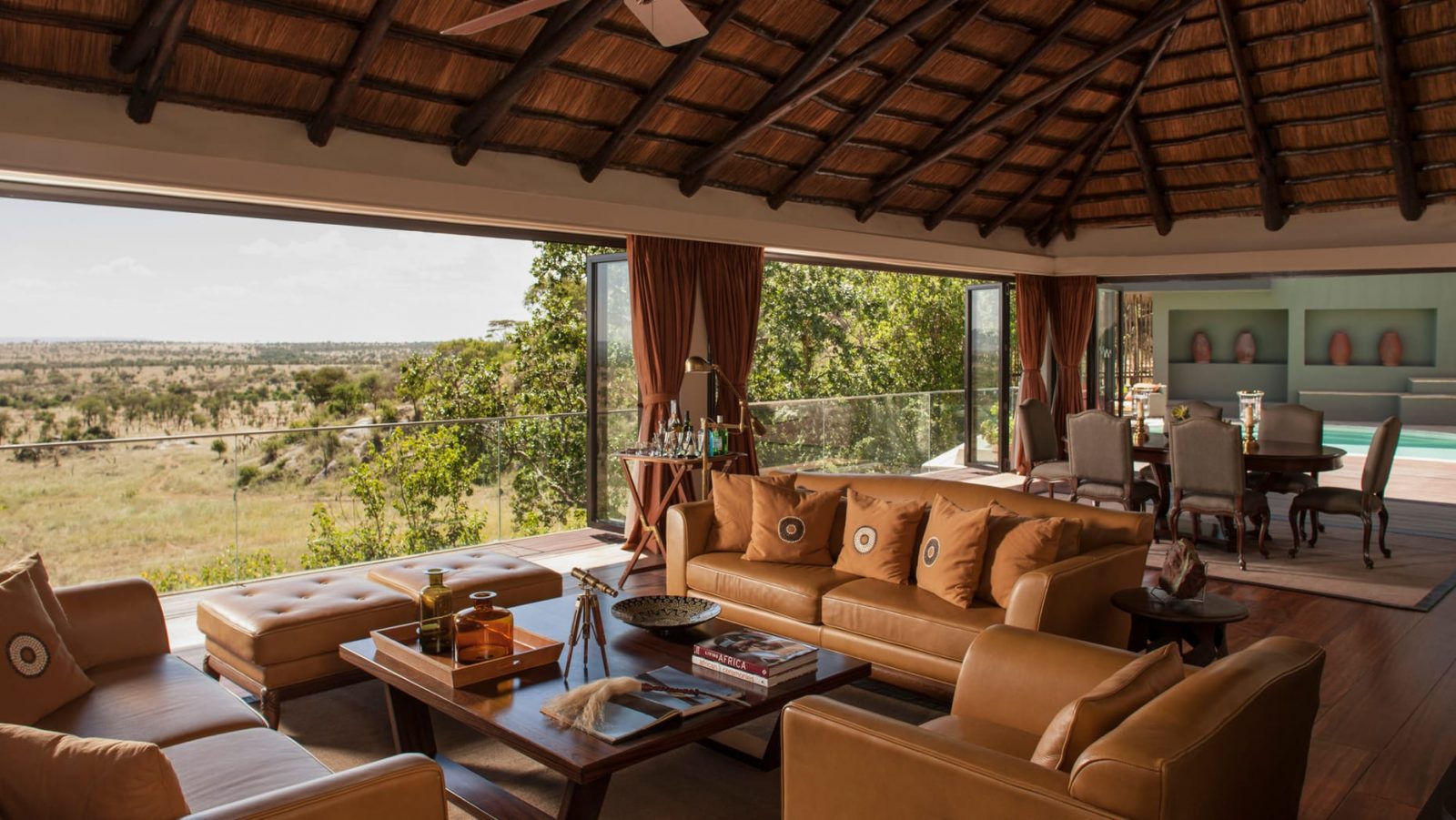Safari Can Be Discovered In Less Than A Week With This 6-Day Itinerary
When planning an itinerary for your safari, there are countless routes and combinations to consider, and it all depends on your available time and budget. Today, however, we're sharing a fantastic itinerary option for exploring Tanzania's wildlife in less than a week. Without further ado, here is our recommended 6-day itineraryin Safari!
6-Day Migration Safari Overview
A large group of wildebeest makes an annual migration that coincides with the annual rain patterns and the growth of new grass. A short rainy season in November brings the herds of wildebeest to the short-grass plains of the Serengeti. They arrive there around November. The short-grass plains are in the area east and south of the Seronera, near Ndutu and the northern part of the Ngorongoro Conservation Area. They are also near the Seronera. There are herds of wildebeest and zebra on these plains as they eat the nutritious plants. Around February, most of the wildebeest give birth to their young. It is typical for them to stay in this area until April. Then, they start to move west, towards the Western Corridor of the Serengeti National Park.
All of our six-day migration safaris and tours are focused on and designed to give you the best chance to see the great Serengeti wildebeest migration. As part of our itinerary, we've chosen to visit the Lake Ndutu area, the southern Serengeti and central Serengeti National Parks, where the majority of the wildebeest migration can usually be found from December through to April.
This itinerary has been set up so that you fly from the Serengeti National Park to Arusha, Tanzania, on the last day. This way, you don't have to drive as much and you can see more of the animals. Ngorongoro Crateris one of the world's most famous places to visit.
The Tanzanian migration safari itinerary below is a sample or suggested itinerary. You can change it to meet your own needs and preferences, or to account for seasonal changes and animal migrations. As with all of our Tanzanian Africa safaris, tours, holidays, and travelpackages, we have given you a wide range of accommodation options that will affect the total cost of your trip. This is so that we can give you the widest range of tour budget options. To get more information about any of our Africa safaris, tours, holidays, or travel packages, don't hesitate to get in touch with one of our travel consultants.
If you want to know when and where the migration will happen, you should know that this can change a lot from year to year because of things like rainfall, water availability, food abundance, predators, and the phosphorus content in the grasses.
Day 1- Arusha To Ngorongoro
Non game-viewing travel time: 4 hours
Distance: 190 km
Get off in Arusha, then head over to the Ngorongoro Conservation Area. When we arrive at the lodge, we'll have time for lunch. After lunch, we'll go over 600 meters into the crater to see wildlife for an afternoon safari tour.
The Ngorongoro National Park is home to a wide range of animals, including herds of wildebeest, zebra, buffalo, eland, warthog, hippopotamus, and huge African elephants. It has a year-round water source and a lot of food for the animals. Another thing that makes this national park so beautiful is that it has a lot of predators, like lions, hyenas, jackals, cheetahs, and the leopard, which can be hard to spot at first. When we visit Lake Magadi, we'll see one of the most important parts of the crater: a large alkaline lake in the south-west corner. There are usually a lot of flamingos, hippos, and other water birds in this part of the world.
According to what you asked for, you'll get what you want for dinner and sleep.
Day 2– Ngorongoro To Ndutu
Non game-viewing travel time: 2 hours
Distance: 90 km
After breakfast, we'll go to the Lake Ndutu area, which is in the Ngorongoro conservation area, which is part of the southern Serengeti eco-system. We'll go there after lunch. There are many different types of animals and plants that live near Lake Ndutu. The alkaline water is still drinkable and used by a wide range of them.
We arrive at the lodge or camp in time for lunch. After lunch, we will go on a game drive in the Ndutu area. At this time of year, most wildebeest migrations can be found in grassy areas. There are usually a lot of elephants, birds, and other animals in the area all the time.
According to what you asked for, you'll get what you want for dinner and sleep.
Day 3– Ndutu
After breakfast, go on a full-day game drive in the Ndutu area of the park. This is a great way to see a wide range of habitats, from swamps and woodland to soda lakes and the world-famous Serengeti short grass plains. Wildebeest and zebra can be seen in huge groups all over the world in this video. A few weeks around February, most of the wildebeest give birth. The sea of grass gives little cover, and the young are easy prey for a wide range of predators. After they are born, the calves of wildebeest can run right away. They are usually strong enough to keep up with the herd in just three days.
It will be served lunch, dinner, and overnight based on the standard and type of accommodation that was selected.
Day 4– Ndutu To Serengeti Plains
Non game-viewing travel time: 2 hours
Distance: 80 km
Serengeti National Park is also known as Seronera. After breakfast, we drive to the center of the park. This is the heart of wild Africa. We descend into the Serengeti National Park, which has endless plains that go on and on and on until the eye can see. We head to the Seronera area, which is one of the best places to see wildlife in the park. This area is home to the Seronera River, which is a valuable water source for this area and draws wildlife that is representative of most of the Serengeti's species.
We arrive in time for lunch and go on a game drive in the Serengeti national park in the afternoon.
Dinner and a night's sleep will be in the Seronera area, based on the standard and type of accommodation that was selected.
Day 5– Serengeti Plains
Enjoy the Serengeti Plainsfrom a Hot Air Balloon (available at supplementary cost by pre-arrangement). Floating silently above the waking bush, where you can see wildlife and the beautiful landscape of Africa, across rivers and over many small villages. After breakfast, go on a full-day game drive in the Serengeti Park. When the wildebeest move from Kenya's Masai Mara to the Ndutu area in the south, the Seronera is where most of them go.
As they move west to the Western Corridor of Serengeti National Park in April, they pass through this area again. You can start in the Seronera area and then go see the short-grass plains in the east and south of the Serengeti Park.
Dinner and a night's sleep will be in the Seronera area, based on the standard and type of accommodation that was chosen.
Day 6– Serengeti Plains To Arusha
Our first stop after breakfast is at the lodge. We drive to the Seronera airstrip and enjoy a game drive as we drive. The group should give the guide $20 to $ 30 a day in tips.
Join a flight from Seronera airstrip to Arusha airport around noon. Our driver will meet you at the Arusha airport and drive you to Arusha town. Our African safari adventure will come to an end when we arrive in Arusha. We will have lunch, and then we will go home. To end our safari, we will drive you to your hotel.
Departure Dates
The departure dates for all of our safaris, tours, holidays, and travel packages in Africa can be changed to meet your own personal needs. There is more information on our safaris in Tanzania that you can get from us. We also have information on our Africa safaris, tours, vacations, and travel packages that go to Tanzania.
What Is There To Do On Safari
There are number of different things available on your safari in Africa — almost anything you can imagine is available somewhere in the safari world:
- Safari Game Drives.
- Night Drives.
- Walking Safaris.
- Cultural Engagement.
- 'Mokoro' Canoe and Boat Safaris.
- Wildlife Research.
- Wildlife Interactions and Encounters.
What Can I Expect On An African Safari
On your African safari, you can look forward to beautiful scenery, a lot of wildlife, tasty food, relaxing afternoons, and great company. Everyone will meet for high tea around 3:00-4:00 pm to drink iced tea, drink coffee, and eat sweets.
Conclusion
This 6-day itinerary would be suitable for anyone who want to get up close and personal with wildlife. Visiting animal areas such as Safari gives you the opportunity to see personally how they uncovered the uniqueness of each location that you will see, and you will come to appreciate them.
